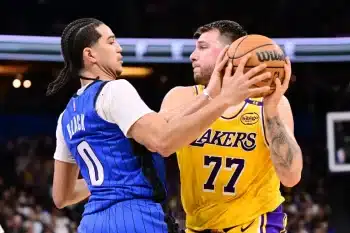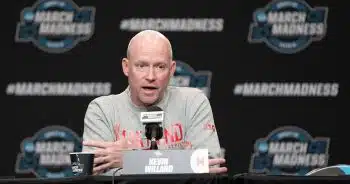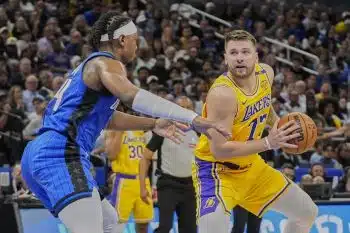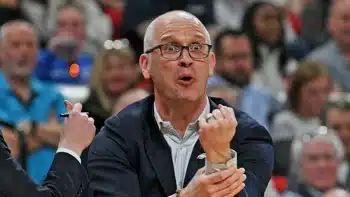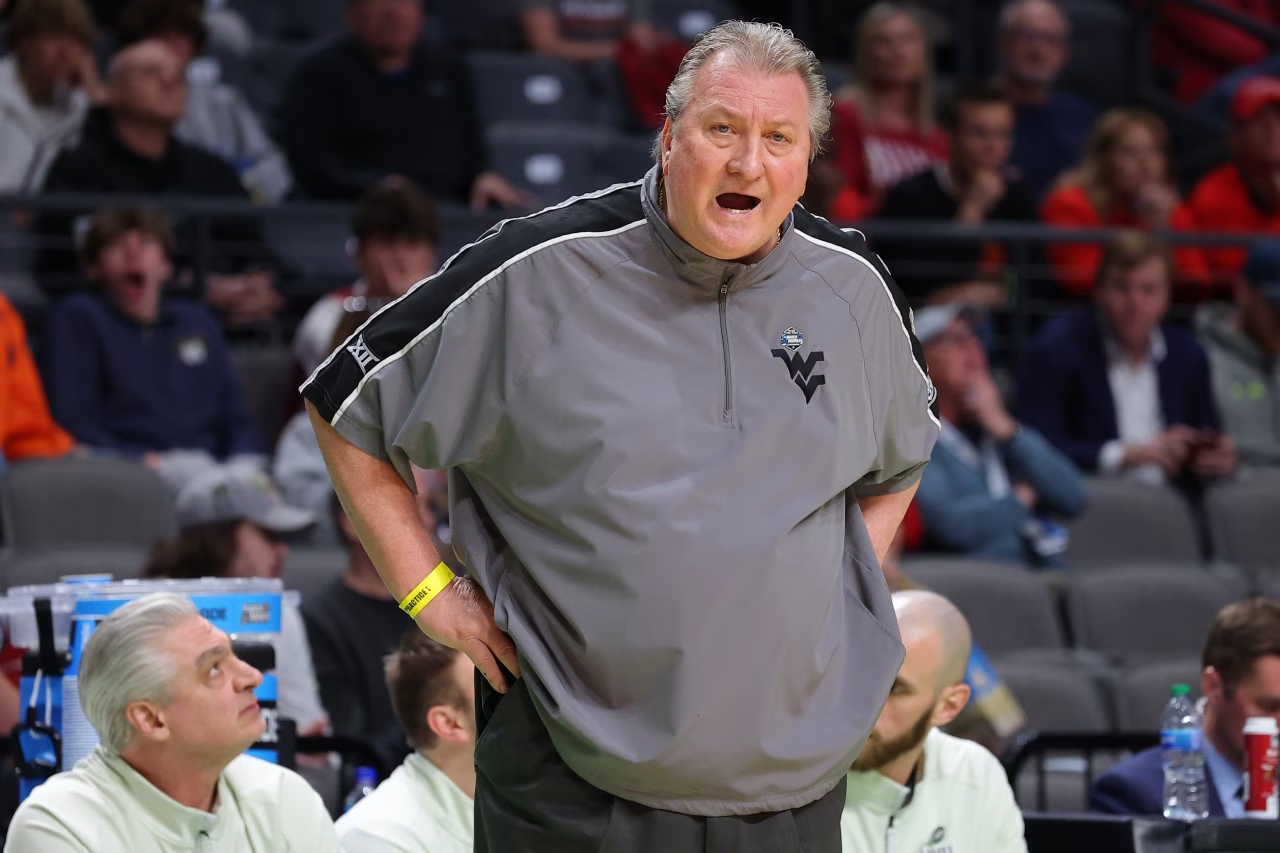NBA
How Charlotte Became Cleveland’s Biggest Eastern Obstacle
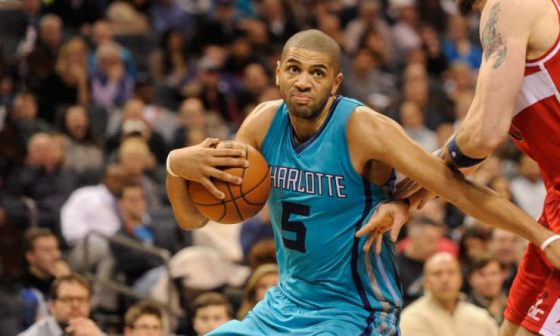
As debates rage around the league regarding which team in the Eastern Conference’s rising middle will claim the second seed, the more practical way of framing the question is really this: Which squad has the best chance of beating Cleveland in a seven-game series?
To whatever degree there’s really a valid response here – and there may not be – the answer might surprise you. Hype trains are running at full steam in Boston and Atlanta, and have combined with passionate noise from north of the border after a franchise-best season last year for Toronto. Together they’ve drowned out a group that could stand above them all, and more importantly could test the defending champs in ways the East hasn’t seen against a LeBron-led team in years.
The Charlotte Hornets aren’t sexy; Michael Jordan’s brand doesn’t seem to extend to the ownership suite. They were really bad for a number of years, eventually digging out of that hole through a combination of solid-but-not-flashy drafting and low-key savvy personnel moves.
They didn’t even draw that much attention last year, with arguably the franchise’s best season this millennium relegated to the runt end of a four-way tie for the third through six seeds and a wild first-round loss to Miami. Make no mistake though – this team was good, bordering on great.
At ninth in both cases, the Hornets were one of five teams to post top-10 marks on both the offensive and defensive ends of the floor, a common benchmark for elite teams – the others were Golden State, San Antonio, Cleveland and the L.A. Clippers. That balance was evident elsewhere: Nine Hornets saw at least 1,000 minutes on the year and five of these used at least 20 percent of team possessions while on the floor. Head coach Steve Clifford put guys like Kemba Walker and Marvin Williams in the best situations of their careers, plus got solid performances out of young guys.
Charlotte’s 2016 offseason has been productive and understated. What looked like a dangerous summer with several major contributors hitting a historically lucrative open market turned into a significant positive.
A draft-day trade for Marco Belinelli was a bit strange, but it preceded multiple A+ moves. GM Rich Cho cashed in on a modest 2015 offseason gamble, re-signing Nicolas Batum to a long term deal after betting on the franchise’s ability to retain the Frenchman after just one season in town. He inked Ramon Sessions to a team-friendly deal to back up Walker in place of departed Jeremy Lin and nabbed Summer League standout and high-ceiling big man Christian Wood.
His biggest coup, though, was re-signing Williams. Not only did Cho get a huge discount for a guy coming off a career year in a perfect role, but the Hornets were able to fit Williams in using his Early Bird rights – allowing them to exceed the cap while signing him and in turn leaving room for a flier on one-time Defensive Player of the Year candidate Roy Hibbert on a prove-it deal. This sort of savvy maneuvering can separate mid-market franchises from the pack.
The result is a team that’s at least 10 deep, with insurance on the roster for injuries or rough stretches and the versatility to throw a number of looks on the floor. Clifford’s base alignment likely remains Williams at the four and Zeller at the five, a spaced-out unit that poured in buckets regardless which wing played alongside Walker and Batum last year, but he can shift big in a hurry with Hibbert on the back line when Frank Kaminsky plays alongside him. The Hornets can throw a ton of length at opponents without sacrificing much shooting.
Walker is the spark plug, now heavily underpaid coming off a career year that looks more like his realistic output alongside well-fitting NBA talent than an outlier. The biggest test here will be his shooting from three, which jumped to 37 percent after hovering in the low 30s most of the rest of his career. Though there is reason to be skeptical of his higher three-point percentage, the optics are good: Kemba shot way more open and wide open threes last year than in previous seasons, per SportVU data,and his comfort level shooting was clear within a well-spaced attack.
The rest is already there if the jumper stays consistent. Walker is now on two consecutive years setting the league-wide standard for low-turnover creation among volume guards, posting an assist percentage/turnover percentage combo unmatched in the NBA both last year and the one before. Clifford’s scheme is meant to emphasize ball control, and it has clearly sunk in; there are few guards on earth who make you more comfortable with the ball in their hands.
Walker also quietly made big strides defensively, leaping from a bottom-third rating in ESPN’s Defensive RPM two seasons ago to a top-third rating last year, a difference of nearly two points per-100-possessions after accounting for team and opponent context. His limited stature caps his ceiling here, but he’s proven to be a smart positional defender who can do some pick-slithering and keep guys in front of him in the two-man game. Kemba easily could have been an All-Star last year, and continuation plus a few smart additions around him are all positive signs for him staying at that level.
Creation could be an issue when Walker sits, or especially if he misses any time, but Clifford has shown the smarts to make due. Batum is a crafty passer who exploits gravity extremely well to help cover only modest ball skills, and both Sessions and presumed third point guard Brian Roberts are capable initiators. Zeller and especially Kaminsky could be ready for more touches on the block next year, especially with bench units while Kemba sits down.
Michael Kidd-Gilchrist will return from an injury-plagued fourth season, and this is where the greatest of Hornets optimists will get their primary fix leading into the season. The Hornets absolutely destroyed teams during MKG’s brief court appearances last season, with per-possession advantages nearly one-and-a-half times the season-long marks of historically great teams in Golden State and San Antonio. This includes a nine-point win over the full-strength Cavaliers in which MKG played his personal season-high of 36 minutes.
The sample (just 205 minutes) obviously begets a healthy grain of salt with these numbers, but this looks and feels like much more than some hot-shooting outlier. Kidd-Gilchrist is among the game’s premier three-position defenders, and he’s a terror in a lineup with four other above-average offensive players: The Walker-MKG-Batum-Williams-Zeller unit, this year’s presumed starting five, more than doubled those Spurs and Warriors’ per-possession domination last season.
His limited shooting hurts much less in units like these, and Clifford now has many more options available to deploy similar lineups that mask MKG’s weaknesses and emphasize his elite skills. Kidd-Gilchrist can play virtually 100 percent of his minutes with at least three long-range threats, and Clifford could even juice things to the max by sliding him up to power forward and running Kaminsky at center.
As Jonathan Tjarks suggested on a recent Basketball Insiders podcast, these kinds of lineups could emulate Billy Donovan’s usage of Andre Roberson as a roll-man in Oklahoma City last year – MKG is a good finisher at the rim with enough passing instincts to survive, and a Walker-MKG pick-and-roll with gravity-inducing shooters dotting the perimeter could throw even good defenses out of whack. And of course, at just 22 years old with a lost season behind him, Kidd-Gilchrist may not have reached his offensive ceiling yet.
With MKG back in the fold, the outline of a tough out for the Cavaliers begins to take shape.
Batum and Kidd-Gilchrist are two of the conference’s best-suited LeBron defenders (to whatever degree such a thing even exists), and having both presents a fascinating option against Cleveland’s bread-and-butter James-Irving two-man game: Put MKG on Kyrie. He should be fully past any injury residuals come playoff time, and has enough athleticism to stay with Irving when he’s 100 percent.
Meanwhile, Charlotte’s resulting ability to switch Irving-James actions and negate the instant mismatches that carried the Cavaliers to a title last year could be a really big deal. This leaves Walker on J.R. Smith, an iffy option to be sure, but there are no perfect scores against the defending champs defensively. The Hornets have the personnel to funnel things differently than nearly any other Eastern Conference challenger.
Speaking of funneling, no big man in the NBA has had more success against a downhill-rolling LeBron than Hibbert over the last several years. Maybe this isn’t 2013 Indiana Hibbert anymore, but those willing to write the 29-year-old off completely after a year in NBA defender’s purgatory under Byron Scott are jumping the gun. Hibbert was still an elite rim protector during his last season under a competent coach; his effect on James in their playoff matchups was real, and he alone offers more of a challenge at the rim than all three of Cleveland’s Eastern opponents in last year’s postseason combined.
It may not be enough to topple the Cavs, but the Hornets match up with Cleveland in a unique way that might give them more problems than anyone else in the conference. Walker will make Irving work on the defensive end, just as Batum will with James; Clifford has both the personnel and the chops to play the matchup game if Tyronn Lue tries to hide either of these guys elsewhere.
Williams is a strong foil for Kevin Love, a shooter who can stretch Love out on one end and do just enough against him down low on the other. MKG can check either of Cleveland’s stars, and one of he or Batum can be on the floor for 100 percent of LeBron’s minutes in a given series. Guys like Zeller and Kaminsky have the foot speed to do better than previous challengers against the Channing Frye bench units that smashed the East last May.
The Hornets were already better than you thought they were, and they’ve only improved after one of the best offseasons in the league. They’re primed to compete for the two seed in the East, and could stand above starrier names as the greatest challengers to the conference’s dominant defending champion.
